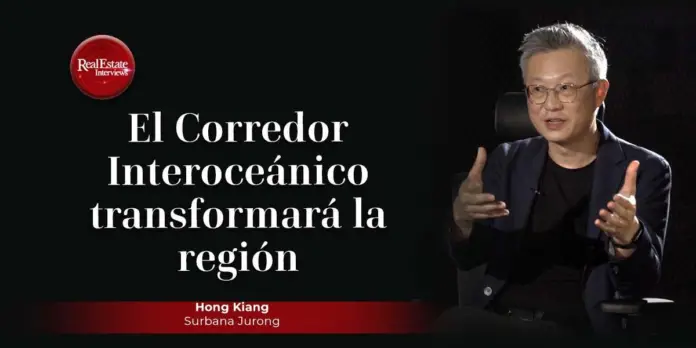The CIIT is one of the most ambitious projects we have had the opportunity to be involved in at Surbana Jurong.
We developed the master plan for this corridor about five years ago in collaboration with the current government administration. This project focuses on connecting the ports of Coatzacoalcos and Salina Cruz, and aims to transform this region through industrial development and infrastructure improvement.
From our first visit to the corridor, it was clear that this project has great potential to boost economic growth in the region. The recent launch of the interoceanic train is a sign of the tangible progress that has been made. It was exciting to see how the train is already in operation, transporting both cargo and passengers. My team and I were thrilled to see local people already using this infrastructure that we planned so carefully. The train, which runs on a historic line that is more than 100 years old, is a symbol of the progress that is coming to the region.
Safety and maintenance of infrastructure are also key aspects for the success of this project. The management of the Mexican Navy ensures that the corridor is well protected, and this is vital to attract investors and ensure long-term stability. The fact that security and management are in the hands of a reliable institution offers a solid foundation on which future developments can be built.
Foundations for the corridor’s success
One of the most crucial elements for the success of a project of this magnitude is political stability and openness for business. From our experience in developing similar projects around the world, we have seen that a favorable business environment, along with clear and sustainable policies, is essential. Collaboration between the government, the private sector and the local community is key to ensuring long-term success.
Another essential component is infrastructure. In addition to the train, we have seen considerable development at the ports, both in Coatzacoalcos and Salina Cruz. Investments in expansion and modernization of these port facilities are fundamental steps towards transforming the corridor into a first-class international logistics hub.
As investments begin to flow, industrial companies are also setting up shop in the region. This is vital to generate employment and improve the quality of life of the people living in the area.
International comparison and sustainability
When I am asked if there are other projects internationally that can be compared to the Isthmus of Tehuantepec Interoceanic Corridor, I usually think of projects like NEOM or The Line in the Middle East. However, there are significant differences. While these projects seek to create new cities with an innovative lifestyle, the Interoceanic Corridor focuses primarily on industrial development.
In my opinion, the corridor has a more sustainable approach, as its main purpose is to generate jobs and improve people’s lives through industrial development. This makes it a project more connected to the needs of the
Source: realestatemarket






